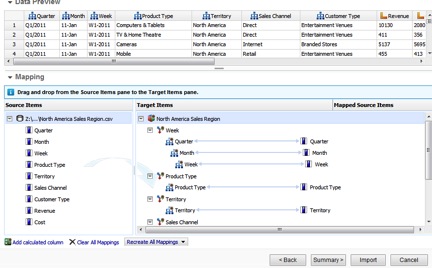The self-service business intelligence approach allows users to make analytical queries and personalized reports on their own, without having to utilize IT manpower. This frees up the IT staff to concentrate on other business tasks—making the set-up beneficial for both parties.
Self-service business intelligence, often shortened to SSBI, is a data analytics practice that allows end users to access data and other corporate information without having to involve the IT department.
The self-service BI interface should be typically easy to use and intuitive so as to be understood by its end users who may not be as tech-savvy. The point is to need as little help as possible from the IT team in extracting and analyzing data.
The IT staff may, however, need to help end users understand the data from the SSBI system by providing a dictionary that corresponds to the business level. This will allow the users to focus on what the data means, rather than the intricacies of the technology it is culled from.
SSBI systems should be constructed with business goals in mind from the very start. Training should be provided to the end users so that they can be brought up to speed on the relevance of the data that they extract from the SSBI system. While most analysts may feel compelled to base their decisions on intuition rather than data, this will only contribute to a chaotic sort of reporting in an organization.
In order to help control that risk, IT should work closely with the business departments to come up with a business vocabulary and key metrics, unified processes for report making and publishing, guidelines on how to access sensitive and top secret data and data security and privacy policies.
When you are in the process of developing your BI platform, make sure that you have the needed resources to create a large and complex structure. A lack of capital and other resources are two surefire killers of a BI project. If you have a solid BI system setup and are just thinking of adding SSBI functions, then you are ahead of the game.
When you do implement your SSBI platform, exercise caution when you provide users with access to the system. There’s a high probability that the information housed in your platform is very sensitive and providing too many people with access to it can be compromising. It also runs the risk of overloading, making the system useless for everyone.
The data system contains millions of rows of data so if one attempts an extremely complex query, it may not be able to perform its function well. This may lead to a breakdown or at the very least, a substandard performance.
The SSBI concept is still fairly new, so it’s quite difficult to tell exactly how it places in the industry. There are however, two major benefits that it is providing businesses to date—empowerment to employees and more freedom to the IT staff.
Used well, an SSBI system could provide an organization with unmistakable value. If planned or implemented poorly however, projects can deteriorate quickly, which can waste a company’s energy, time and resources.




